How Does Generative AI Work for Software Development?
Ditstek Blogs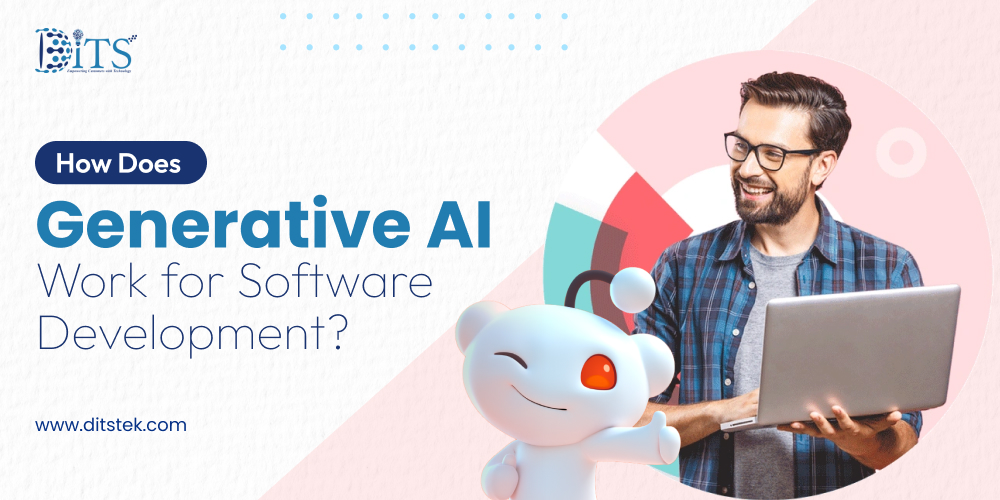
The way software is built is changing rapidly, thanks to the rise of artificial intelligence. Among the most transformative technologies is generative AI in software development, which is reshaping how developers write, test, and optimize code. Unlike traditional automation tools, generative AI doesn’t just follow predefined rules—it learns from vast datasets of code, recognizes patterns, and generates intelligent outputs that resemble human-written logic.
Businesses and developers alike are turning to this technology to accelerate delivery, improve accuracy, and enhance innovation. From faster prototyping to automated debugging, generative AI is emerging as a trusted partner in the modern development lifecycle. This blog explores how generative AI works behind the scenes, its applications and benefits, and what it means for the future of software engineering.
Want Faster, Smarter Software Delivery?
Generative AI is rewriting the rules of software development. Share your requirements with us and see how AI-driven solutions reduce time-to-market while ensuring clean, reliable code.
Understanding Generative AI in Software Development
To grasp its potential, it’s important to first understand what generative AI actually means in the context of software. At its core, generative AI in software development refers to AI systems that can create, modify, and optimize code based on natural language prompts or existing programming patterns. Instead of manually writing every line, developers can now rely on AI to suggest functions, automate repetitive coding, and even generate entire modules.
Unlike traditional AI, which often follows rule-based systems, generative AI adapts to new contexts by learning from massive amounts of open-source and enterprise code. It recognizes syntax, structure, and logic, enabling it to provide highly relevant outputs for developers. Popular generative AI tools for software development like GitHub Copilot and ChatGPT exemplify this shift by offering real-time coding suggestions, bug fixes, and documentation support.
The difference lies in its intelligence. Rather than being a rigid assistant, generative AI behaves like a collaborator, capable of anticipating developer needs and producing results that go beyond basic automation. With increasing demand for faster release cycles and improved code quality, the adoption of generative AI software development is expected to grow across industries, from finance and healthcare to logistics and retail.
The Core Working Mechanism of Generative AI
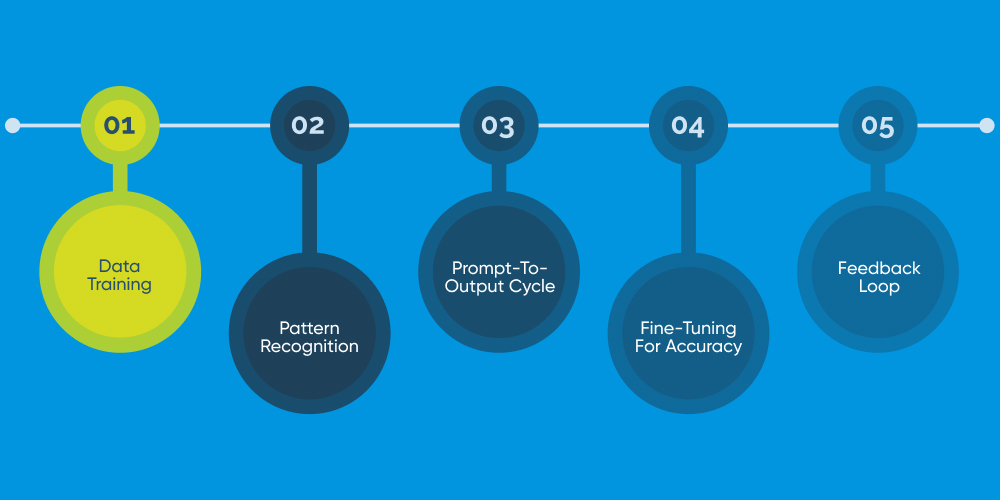
The magic of generative AI for software development lies in how these models are trained and applied to real-world coding challenges. Unlike traditional automation, generative AI uses advanced machine learning techniques to analyse billions of lines of code, identify hidden patterns, and generate meaningful outputs that align with developer intent. Here’s how the process works:
1. Data Training: Models are trained on massive repositories of source code, documentation, and natural language instructions. This enables them to “understand” not just syntax but also logical flows.
2. Pattern Recognition: Once trained, the AI recognizes structures and patterns in programming languages, making it possible to autocomplete code or suggest optimized alternatives.
3. Prompt-to-Output Cycle: Developers simply provide prompts, such as a function name or problem statement, and the AI generates relevant solutions in seconds.
4. Fine-Tuning for Accuracy: Modern systems allow fine-tuning, which means generative AI can adapt to specific industries or frameworks, producing domain-relevant results.
5. Feedback Loop: Continuous improvement happens through reinforcement learning, where user feedback helps the model become smarter and more accurate over time.
When implemented correctly, this cycle transforms how organizations approach software development, shifting from manual, time-consuming processes to intelligent, AI-assisted workflows.
Need AI to Improve Code Quality?
Generative AI can detect bugs, suggest fixes, and keep your codebase consistent. Submit your details to learn how we ensure higher standards across every development stage.
Generative AI Applications in Software Development
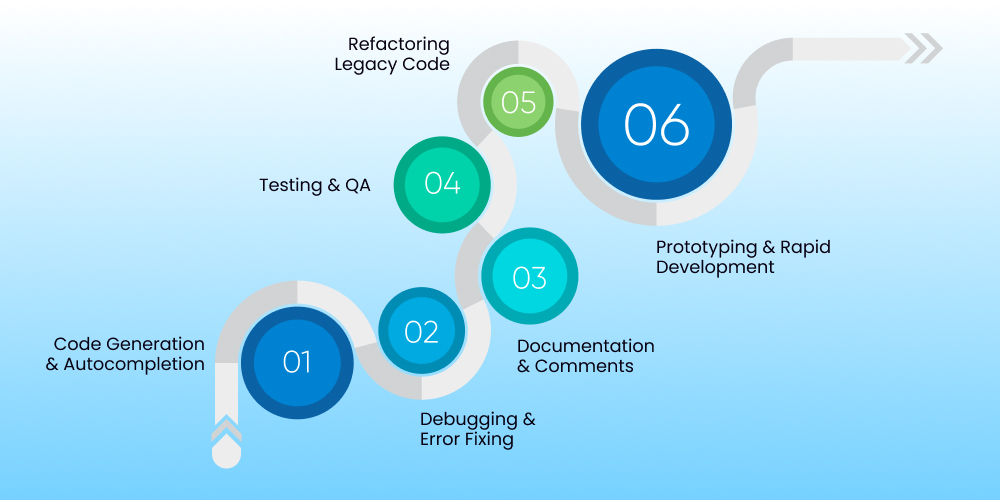
The true value of this technology becomes clear when looking at real-world generative AI use cases in software development. From simple code suggestions to advanced debugging, AI is now present at nearly every stage of the development lifecycle. Some of the most impactful applications include:
1. Code Generation & Autocompletion
Generative AI assists developers by writing boilerplate code, autocompleting functions, and suggesting optimized methods, saving valuable time.
2. Debugging & Error Fixing
AI-powered assistants can scan through large volumes of code to detect potential bugs and suggest reliable fixes, improving accuracy and reducing delays.
3. Documentation & Comments
One of the often-overlooked but critical tasks—writing documentation—can be automated with generative AI, ensuring clarity and consistency across projects.
4. Testing & QA
By creating unit tests, regression tests, and integration checks, generative AI improves quality assurance and lessens the amount of manual work needed.
5. Refactoring Legacy
Old, complex systems can be modernized faster by using AI to restructure or refactor outdated code, ensuring better performance and maintainability. With expert Legacy modernization services, businesses achieve smoother transitions, reduced risks, and long-term scalability.
6. Prototyping & Rapid Development
Businesses can use AI to quickly build prototypes or minimum viable products (MVPs), reducing time-to-market and fostering innovation.
At DITS, we integrate AI into the software we develop—not only to accelerate development but also to enhance quality assurance, maintain clean code standards, and customize solutions for specific business needs. This approach makes our solutions both future-ready and adaptable to diverse industries.
Benefits of Generative AI for Developers and Businesses
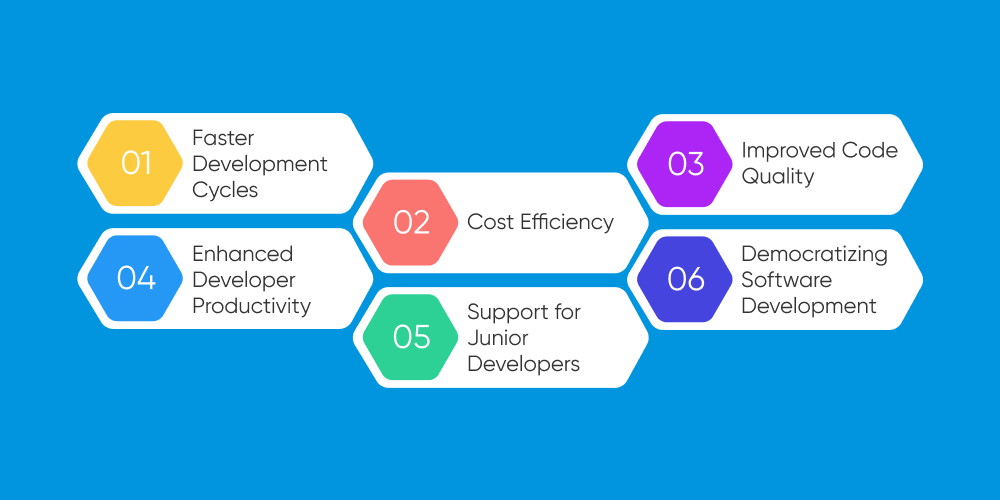
The use of generative AI tools for software development is transforming how companies build, test, and deliver software. Beyond automating tasks, it adds measurable value to both developers and organizations. Here’s a closer look at the key benefits:
1. Faster Development Cycles
Generative AI accelerates software creation by handling boilerplate code, suggesting functions, and even generating modules from simple prompts. This reduces time spent on repetitive coding and allows teams to deliver features and applications much faster, which is critical in today’s competitive market.
2. Cost Efficiency
Since AI automates routine tasks like testing, documentation, and debugging, companies spend fewer hours on manual work. This not only lowers development costs but also allows businesses to allocate resources to higher-value projects such as innovation or customer experience.
3. Improved Code Quality
By analyzing large datasets of programming patterns, AI can detect errors early and suggest optimized solutions. This ensures the codebase remains clean, efficient, and consistent across teams, which reduces technical debt and long-term maintenance costs.
4. Enhanced Developer Productivity
Developers no longer have to spend hours on mundane or repetitive tasks. Instead, they can focus on complex problem-solving, designing innovative features, and refining user experiences. This shift leads to more motivated teams and higher overall productivity.
5. Support for Junior Developers
Generative AI acts like a mentor by offering real-time guidance, code suggestions, and examples. This makes it easier for junior developers to learn best practices, gain confidence, and contribute meaningfully to projects earlier in their careers.
6. Democratizing Software Development
With AI assistance, even teams with limited technical knowledge can participate in building functional applications. This levels the playing field for startups, small businesses, and enterprises by making high-quality software development more accessible.
For these reasons, organizations are increasingly turning to generative AI software development services as part of their long-term technology strategies.
Seeking Cost-Efficient Development Solutions?
AI reduces repetitive tasks and optimizes workflows—cutting costs while boosting outcomes. Tell us about your project and discover how DITS can maximize ROI through AI-driven development.
Challenges and Limitations in using Generative AI
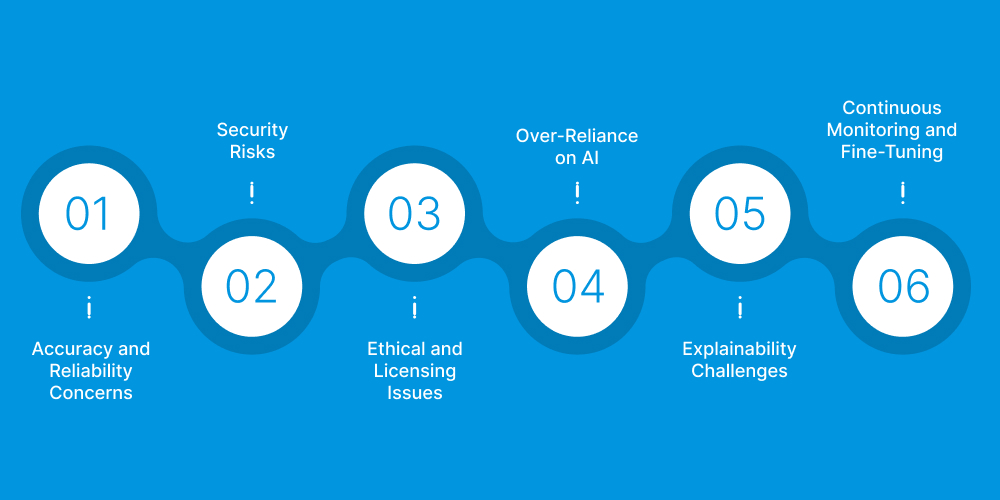
While the benefits are significant, organizations must also be aware of the challenges that come with adopting generative AI for software development. Like any powerful technology, it brings risks that need careful management.
1. Accuracy and Reliability Concerns
AI models can sometimes generate incorrect or inefficient code. Developers must review and validate outputs carefully, as relying solely on AI may introduce hidden errors into applications.
2. Security Risks
Not all AI-generated code is secure by default. If unchecked, it may include vulnerabilities or outdated practices that expose software to threats, making security audits essential.
3. Ethical and Licensing Issues
Since AI models are trained on massive datasets, questions arise about the ownership and licensing of generated code. Companies must consider legal and compliance aspects before deploying AI-generated solutions at scale.
4. Over-Reliance on AI
While AI makes coding easier, there’s a risk of developers becoming too dependent on it. This can slow skill development and reduce the ability of teams to solve complex problems without assistance.
5. Explainability Challenges
AI sometimes produces results without explaining how it reached them. This lack of transparency can make it difficult for teams to understand the reasoning behind certain outputs, which is critical for sensitive industries like healthcare or finance.
6. Continuous Monitoring and Fine-Tuning
Generative AI models require ongoing updates and fine-tuning to stay effective. Without regular improvements, they may deliver outdated or less relevant solutions over time.
Addressing these challenges doesn’t mean avoiding AI—it means adopting it responsibly, with proper review processes and skilled oversight to balance innovation with risk management.
Future of Generative AI in Software Development
The future of software engineering is closely tied to the evolution of generative AI. As the technology matures, its role will extend far beyond simple code assistance and become a core driver of innovation across industries.
1. AI-Assisted DevOps
Generative AI will increasingly support DevOps pipelines by automating deployments, monitoring system health, and predicting failures before they occur. This will make software delivery faster and more reliable.
2. Low-Code and No-Code Expansion
Future platforms will integrate generative AI to enable even non-technical users to build applications. By simply describing requirements in natural language, businesses will be able to generate functional prototypes within minutes.
3. Seamless Tool Integration
With the rise of generative AI integration services, development environments, cloud platforms, and collaboration tools will embed AI directly, creating a unified ecosystem where code generation, testing, and deployment all work together intelligently.
4. Industry-Specific Customization
Generative AI will be fine-tuned for specific industries such as healthcare, logistics, and fintech, producing more relevant and secure outputs tailored to domain needs.
5. Human-AI Collaboration
Rather than replacing developers, the future will emphasize collaboration—where humans provide creativity and problem-solving, while AI manages repetitive, data-driven tasks. This balance will help teams achieve higher productivity without sacrificing innovation.
6. Regulatory and Ethical Standards
As adoption grows, governments and organizations will introduce clearer guidelines on compliance, data privacy, and intellectual property. This will ensure responsible use of generative AI across enterprises.
The next decade will likely see generative AI embedded in nearly every stage of the software lifecycle, transforming how applications are planned, developed, tested, and maintained.
Need a Trusted AI Development Partner?
At DITS, we combine experience with innovation to deliver AI-powered solutions that scale with your business. Fill out the form today and start building future-ready applications.
Why Choose DITS for Software Development
At DITS, we go beyond traditional development by integrating artificial intelligence into every stage of the software lifecycle. From requirement analysis to deployment, our team leverages AI to enhance code quality, automate testing, and deliver customized solutions that align with business goals. As an experienced AI software development company, we specialize in blending innovation with reliability, ensuring faster delivery, scalability, and long-term value. Our expertise spans generative AI, workflow automation, and enterprise-grade applications, making us the trusted partner for businesses across industries. Whether you need modernization, end-to-end product development, or advanced AI capabilities, DITS delivers solutions designed to meet today’s challenges and tomorrow’s opportunities.
Conclusion
Generative AI is no longer a futuristic concept—it’s an active force reshaping how software is created, tested, and maintained. Assisting developers with code generation, debugging, testing, and documentation, it reduces effort while accelerating delivery. At the same time, businesses benefit from cost savings, higher productivity, and improved quality.
A leading software development company South Africa leverages Generative AI to deliver smarter, faster, and scalable solutions. Yet, like any transformative technology, success depends on responsible adoption. Companies must balance efficiency with oversight, ensuring outputs are accurate, secure, and ethically compliant. As human creativity merges with AI-driven intelligence, software development will evolve into a faster, smarter, and more collaborative process—paving the way for the next generation of digital innovation.
FAQs
1. What is generative AI in software development?
Generative AI for software development refers to the use of AI models that can generate, optimize, and refactor code based on natural language prompts or existing programming patterns.
2. Can generative AI replace human developers?
No, generative AI is not a replacement for developers. It works as an assistant, automating repetitive tasks and improving efficiency, while humans provide creativity, problem-solving, and oversight.
3. How does generative AI generate accurate code?
Generative AI models are trained on large datasets of code and documentation. They recognize patterns, understand logic, and suggest relevant outputs, which developers can refine for accuracy.
4. What are the risks of using generative AI for coding?
The main risks include inaccurate outputs, security vulnerabilities, and licensing concerns. Proper validation and monitoring are essential to avoid these issues.
5. How to use AI in software development effectively?
usinesses can integrate AI for code generation, debugging, testing, and workflow automation. Partnering with experienced providers ensures safe and efficient adoption of AI technologies.
6. Do you offer generative AI software development services for enterprises?
Yes, we provide tailored generative AI software development services that include code generation, quality assurance, and generative AI integration services for enterprise systems.
7. Can you modernize our existing legacy systems with AI?
Absolutely. Our team provides generative AI integration services and legacy modernization to enhance performance, security, and scalability of older platforms.
8. How do you ensure the security of AI-powered applications?
We follow industry best practices with secure coding, compliance checks, and regular testing to protect sensitive business data and prevent vulnerabilities.

Dinesh Thakur
21+ years of IT software development experience in different domains like Business Automation, Healthcare, Retail, Workflow automation, Transportation and logistics, Compliance, Risk Mitigation, POS, etc. Hands-on experience in dealing with overseas clients and providing them with an apt solution to their business needs.
Recent Posts
Get in touch



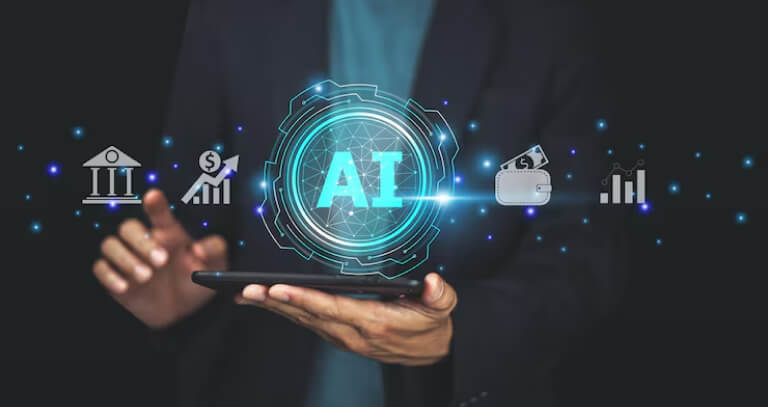
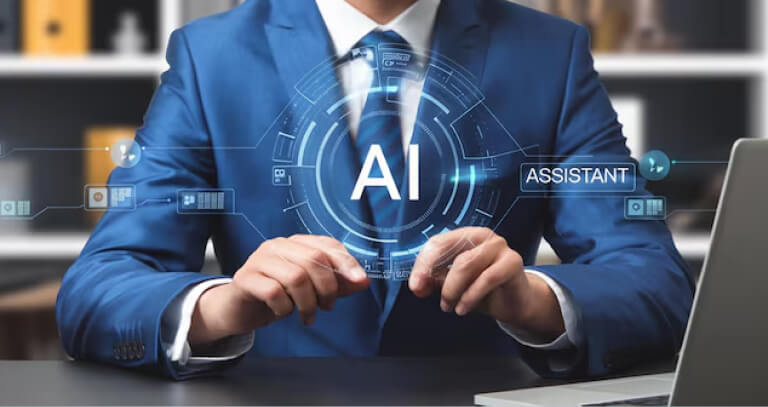
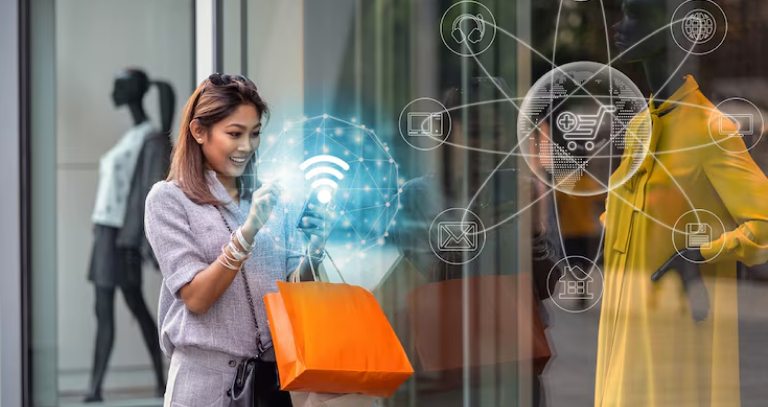
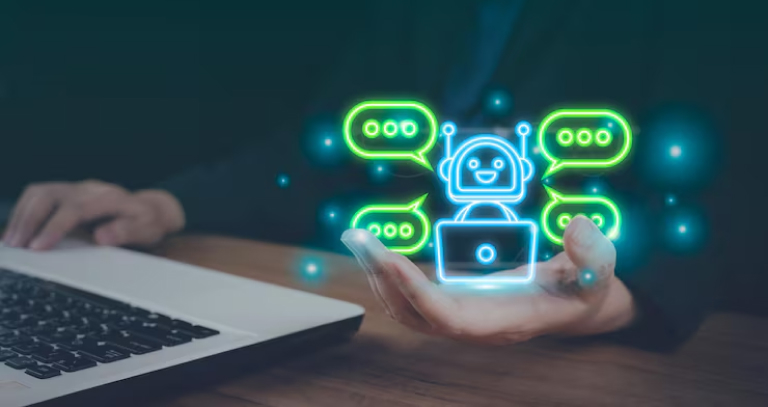

.jpg)

